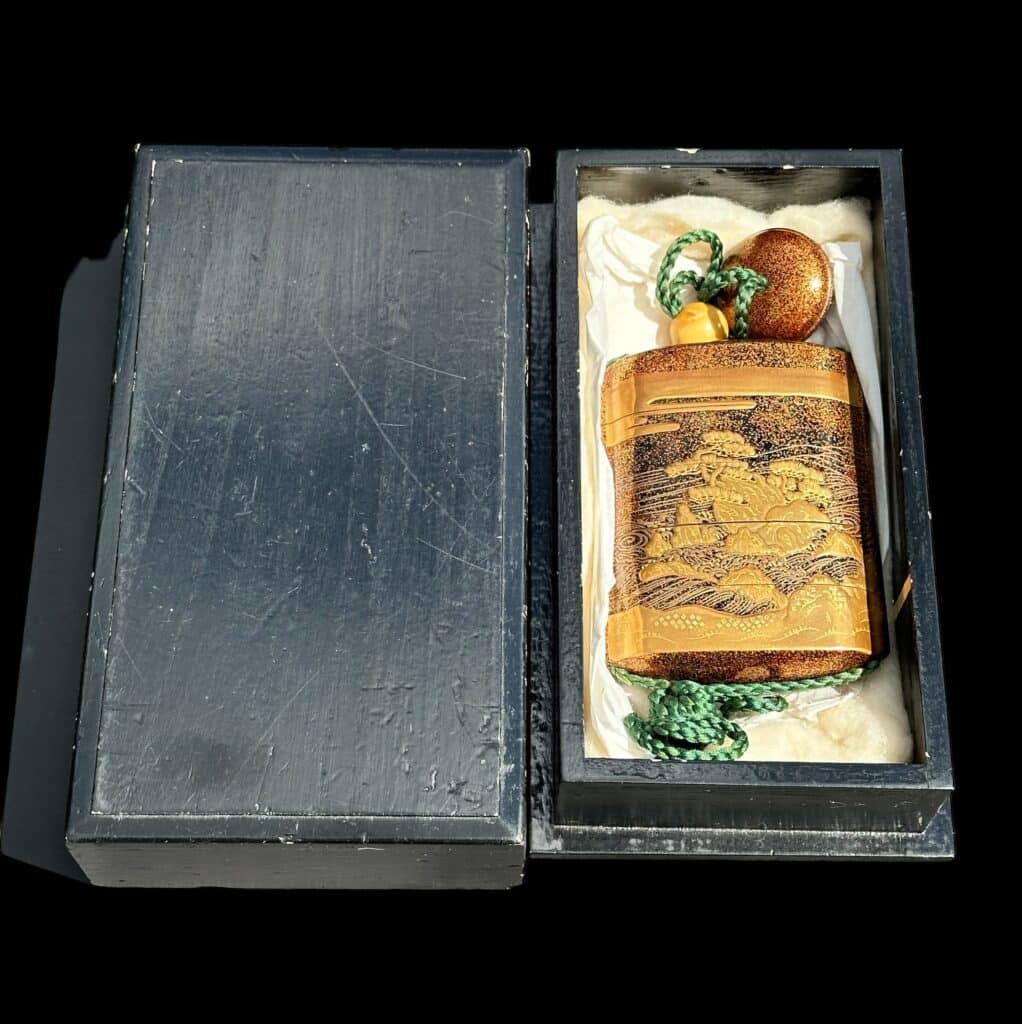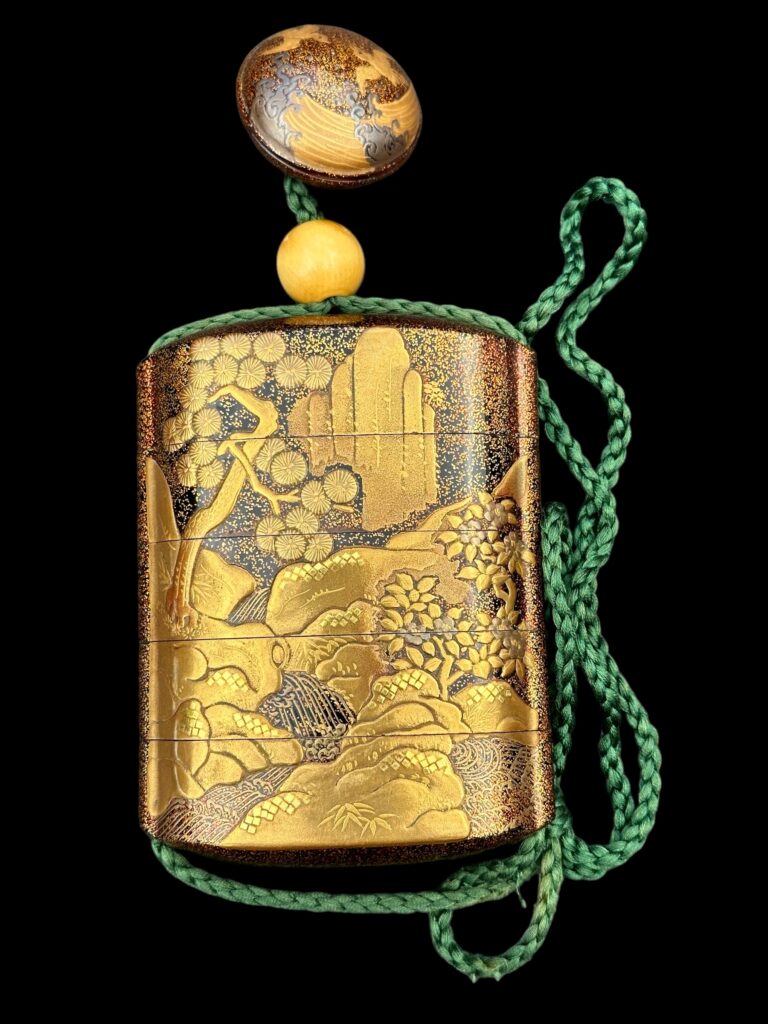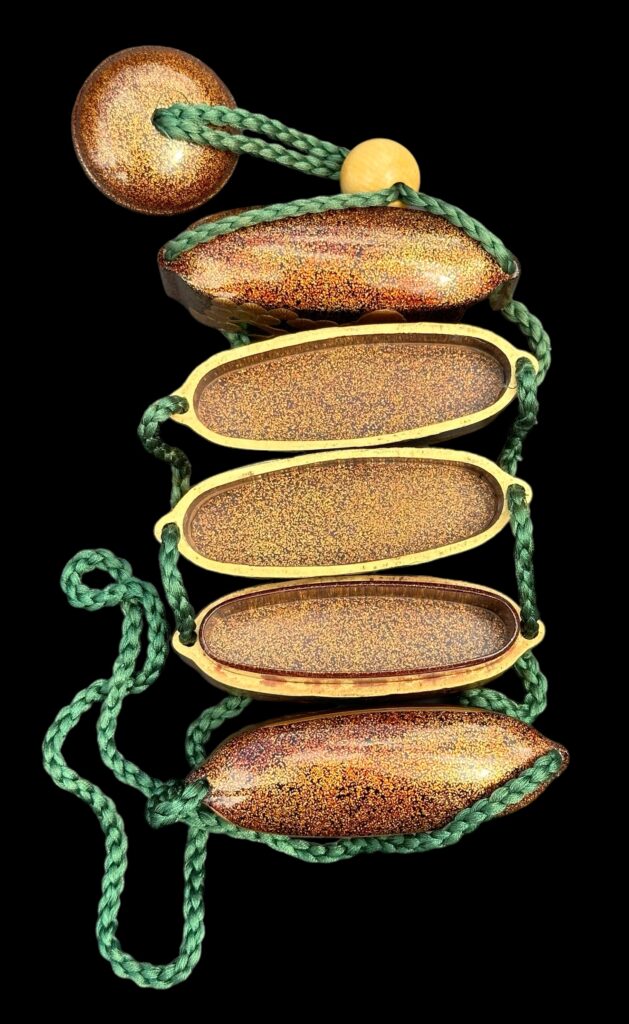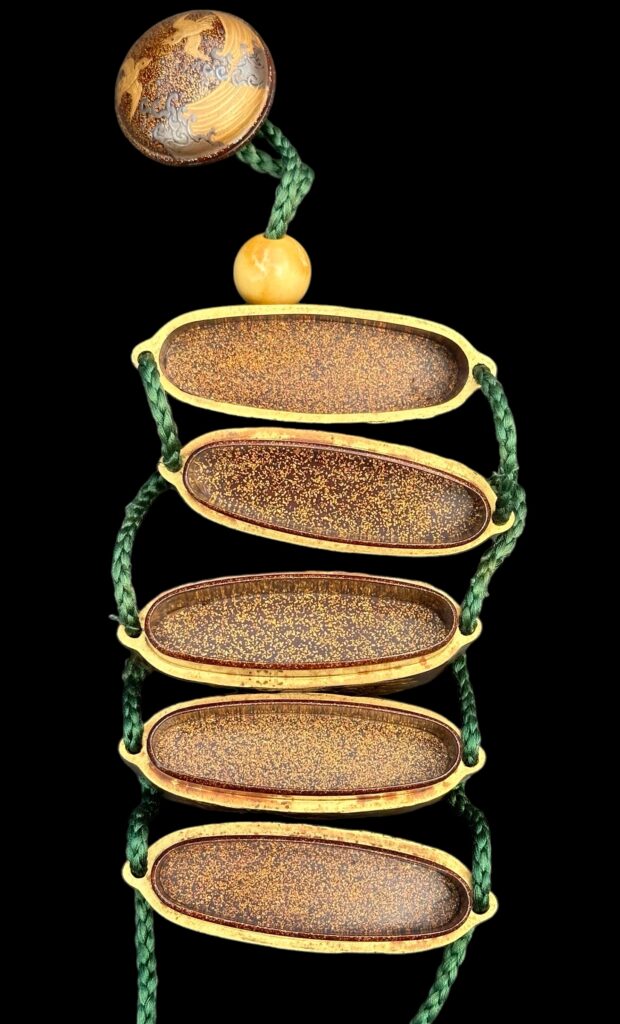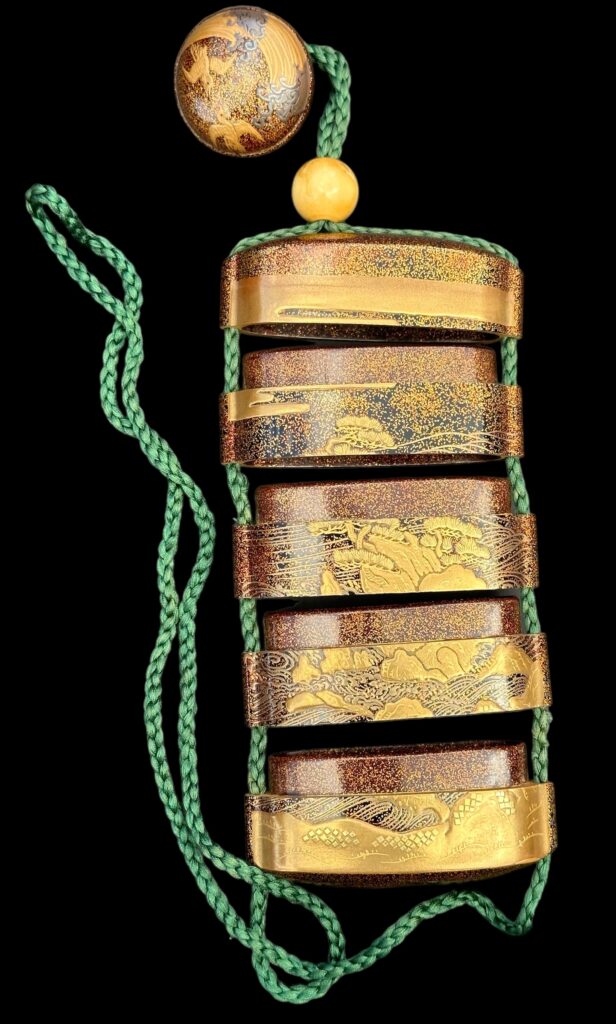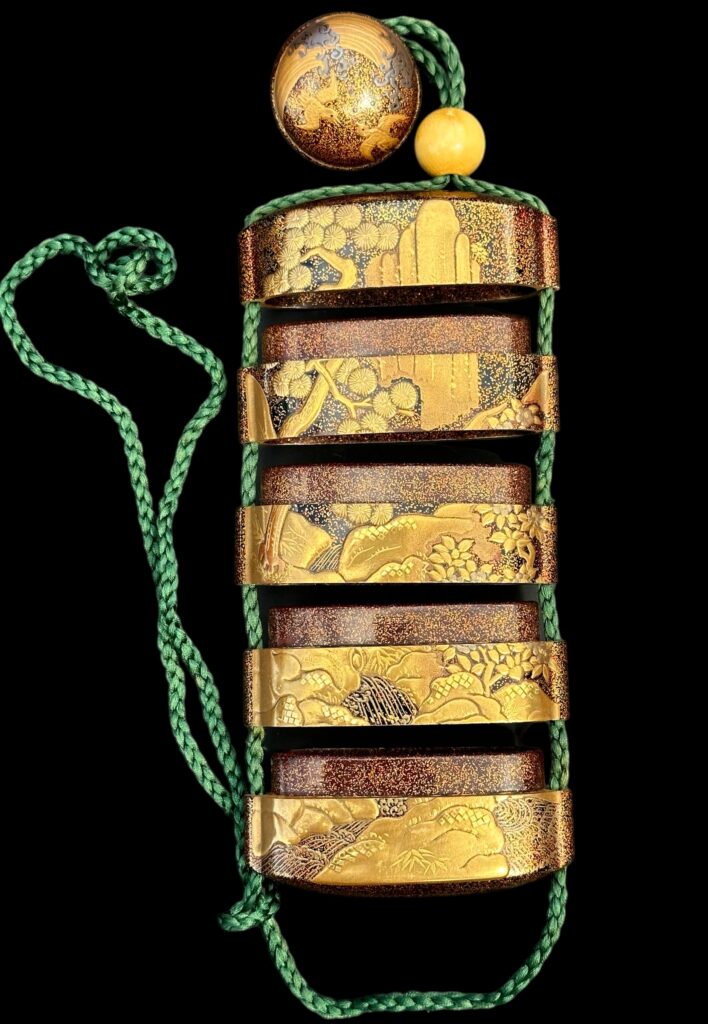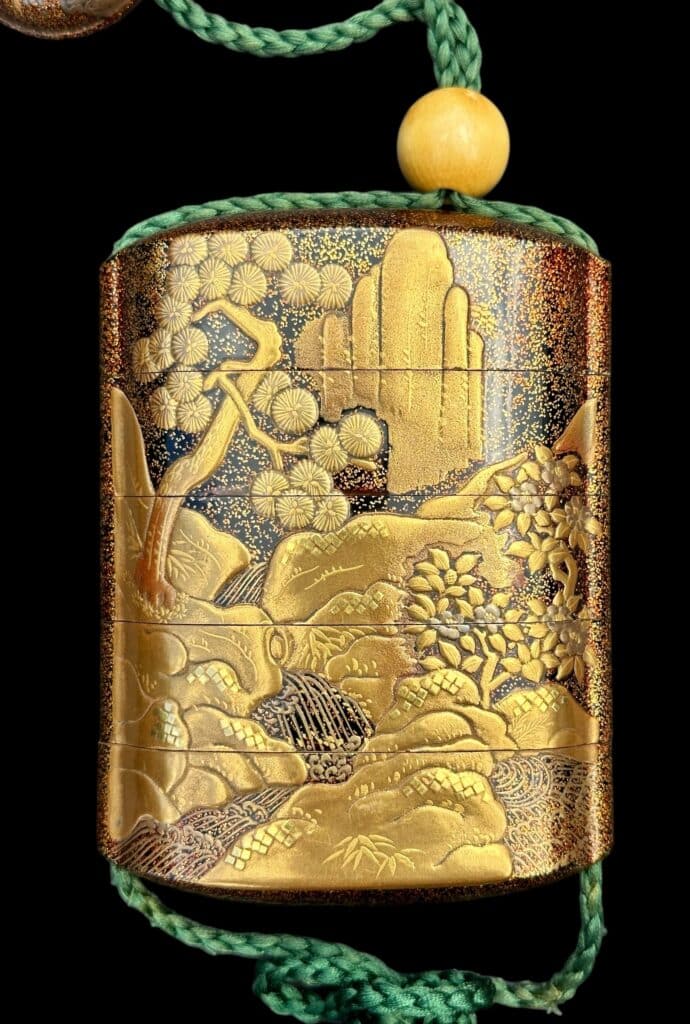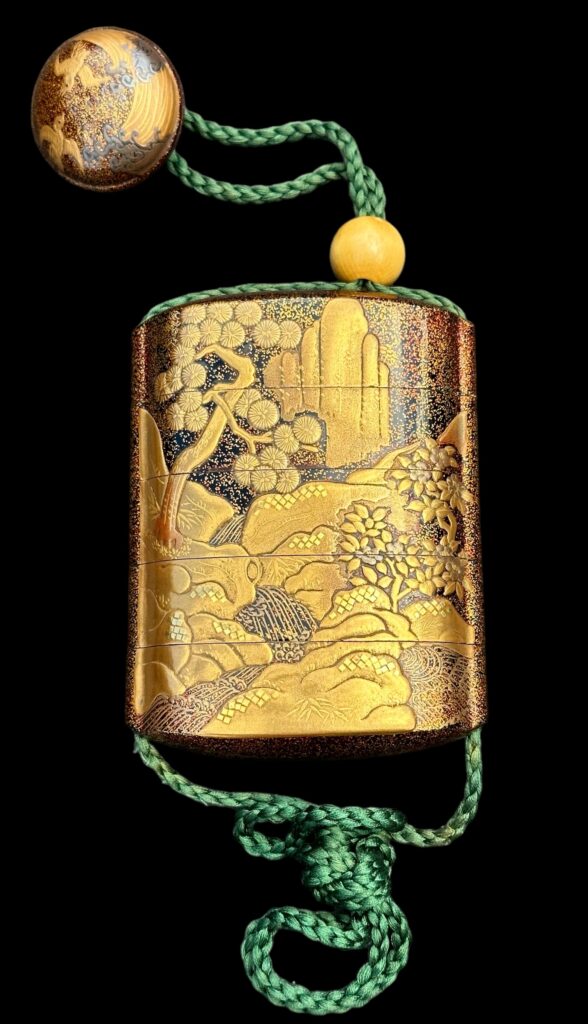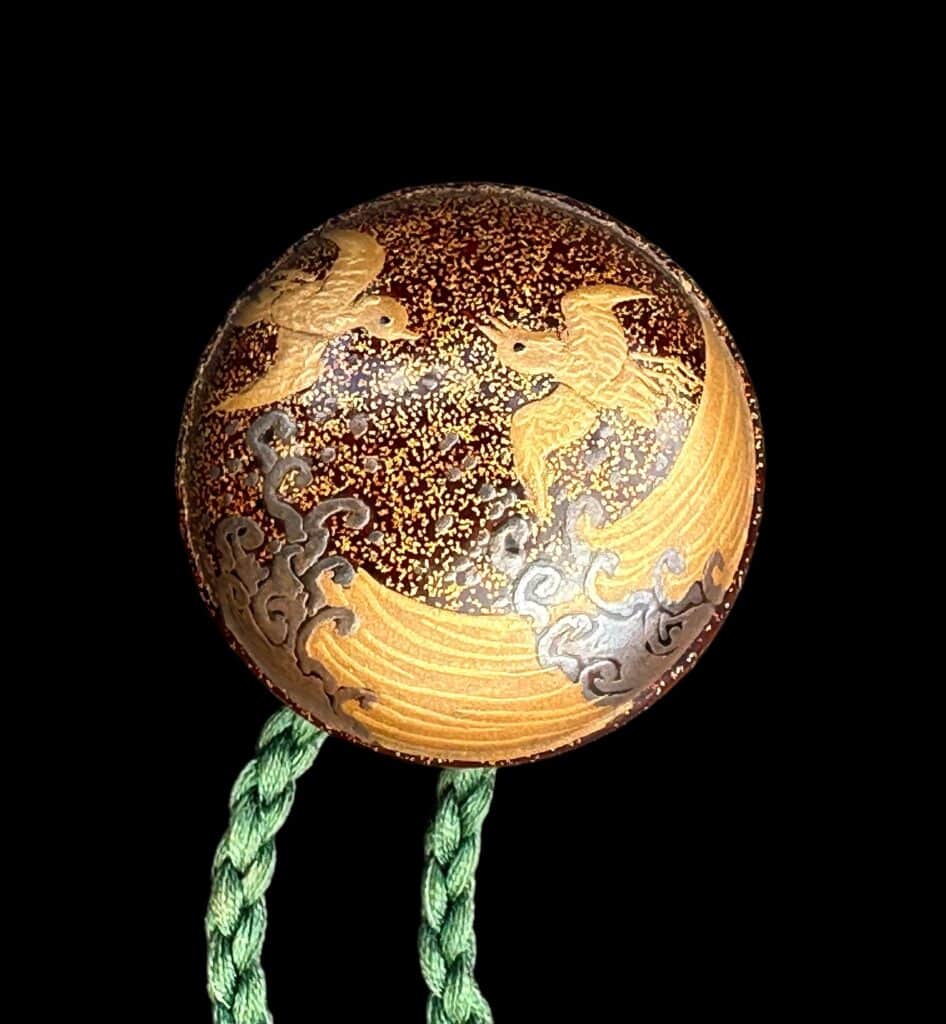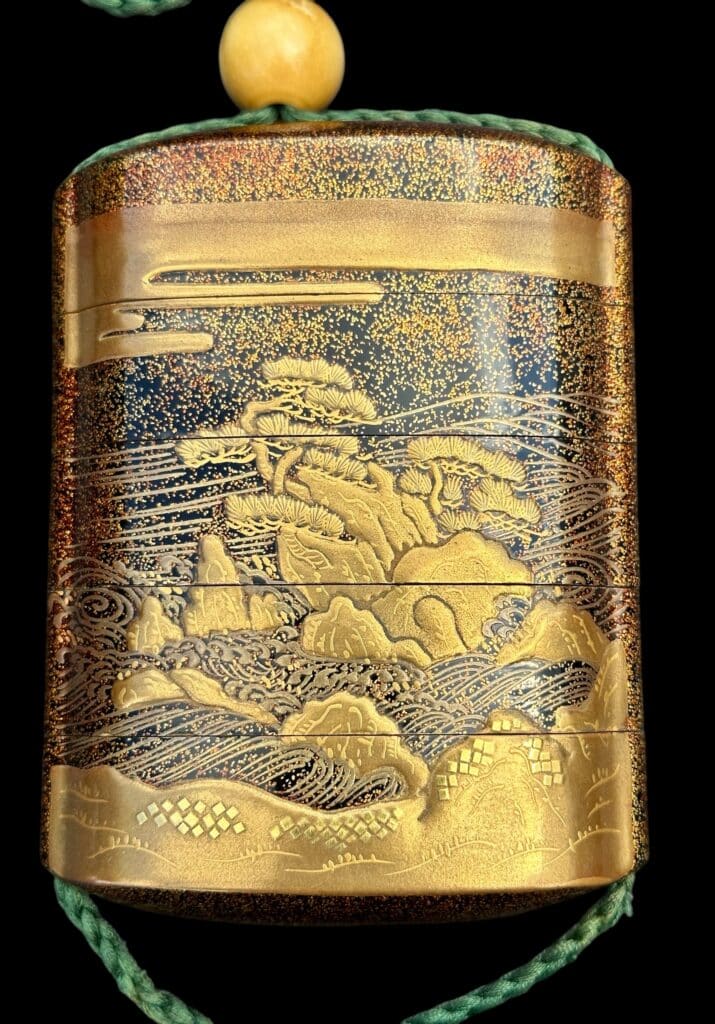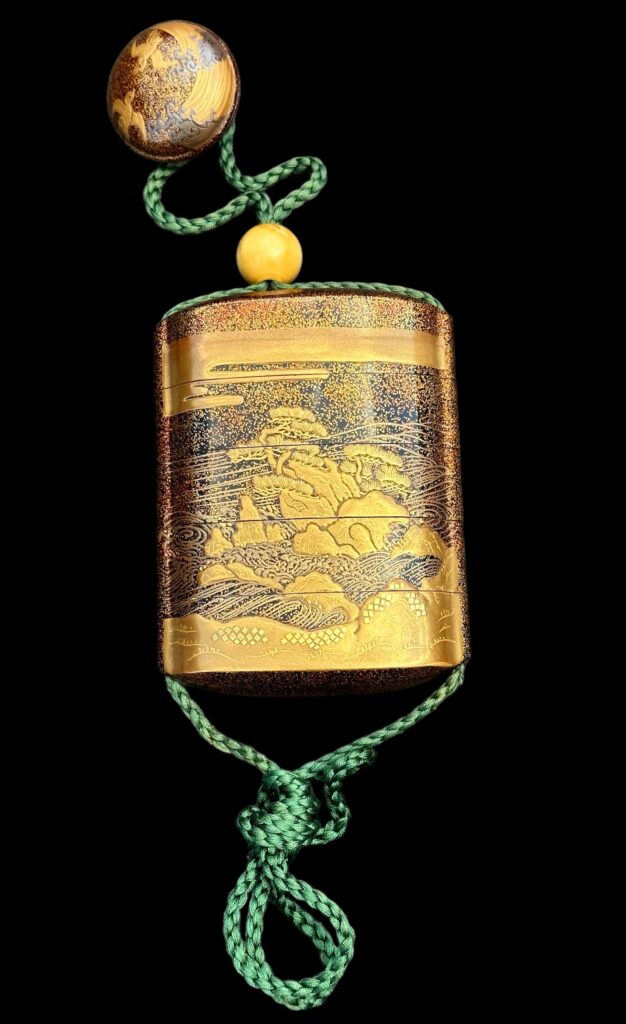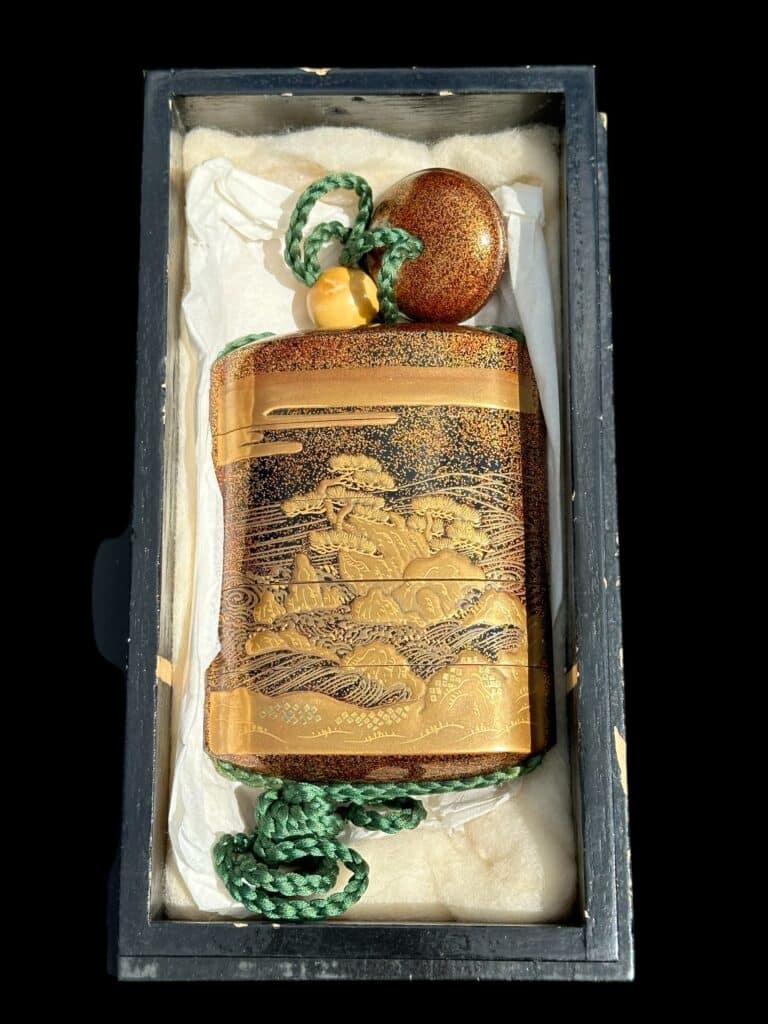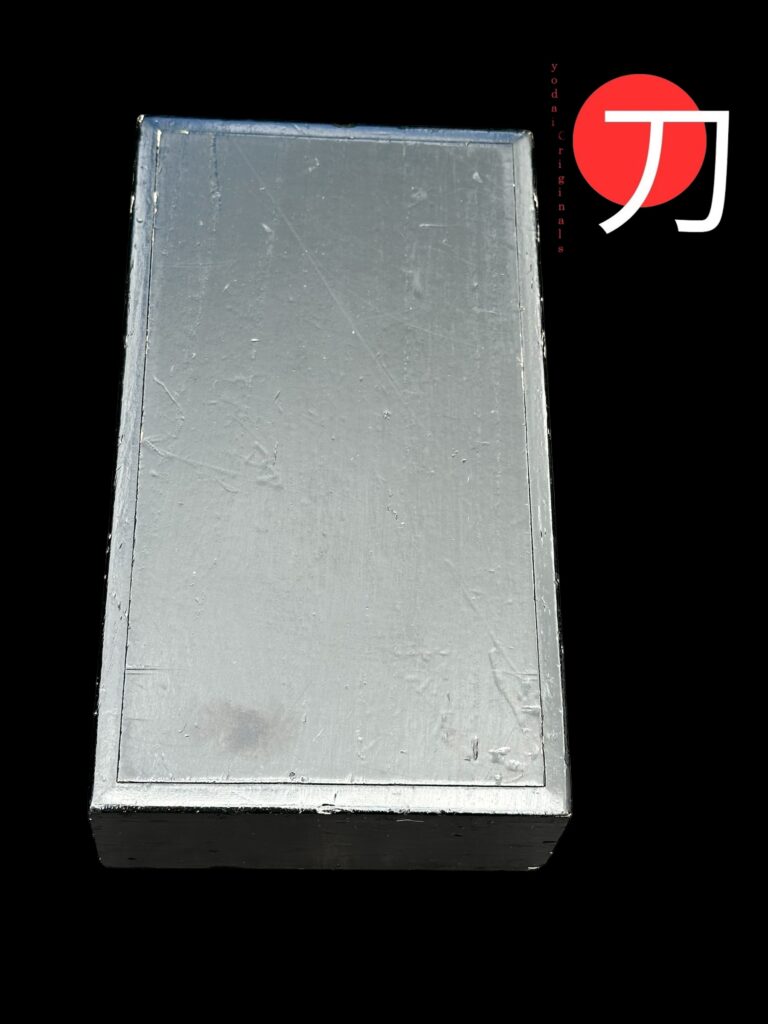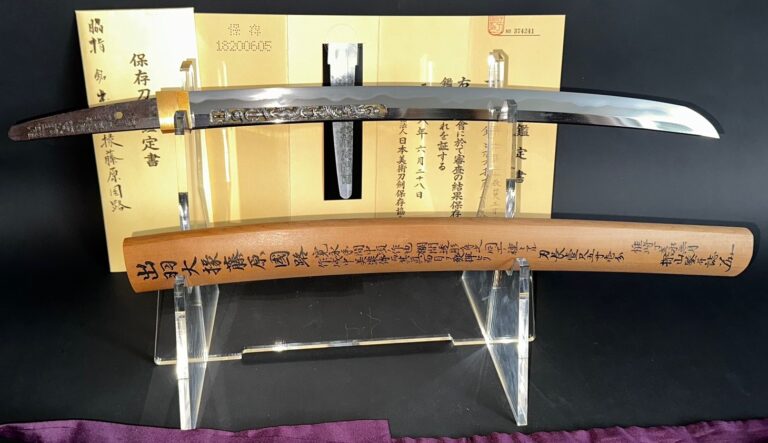Description
Embark on a Journey of Elegance with the 1840 Japanese Inro: Wajima Nuri Craftsmanship Unveiled. This Antique Treasure Blends Artistic Mastery and Functional Design for a Timeless Appeal.
Step into the World of Exquisite Japanese Lacquerware with the 1840 Inro, a Masterpiece from the Wajima Nuri Style in Kanazawa. This Inro, a Traditional Japanese Case with a Fusion of Maki-e Painting and Bow Shelf Goods, Showcases Supreme Elegance and Aged Kaneko Makie Nashiji Art.
Crafted in the Kada Domain, the Inro Radiates the Charm of Old Matsuyama Mizumaki Antiques, Featuring Wajima Painting Lacquer Art. Its Orange Hue, Measuring 10cm in Length and 7cm in Width, Captures the Essence of Timeless Beauty.
The Inro, Functioning as a Stamp Case, Embodies the Rich Cultural Heritage of the Sengoku Period (1467-1615). Traditionally Worn Suspended from the Obi (Sash) during Kimono Attire, Inros Like These Were Portable Identity Stamps and Medicine Containers for Travel.
During the Edo Period (1603-1868), Inros Gained Popularity as Men’s Accessories. Wealthy Merchants and Samurai Classes Favored These Artistic Lacquerware Pieces, Turning Them into Collectible Items. The Maki-e Technique and Artistic Value of Inros Continued to Evolve from the Late Edo Period to the Meiji Period (1868-1912).
The Term ‘Inro’ Derives from ‘In’ (印), Meaning Seal or Stamp, and ‘Rō’ (籠), Meaning Basket. The Elegant Craftsmanship of the 1840 Inro Transcends Time, Making It a Collectible Art Object and a Testament to Japanese Artistic Ingenuity.
Explore the Legacy of Japanese Artistry with this Inro, a Harmony of Functionality and Aesthetic Beauty, Echoing the Elegance of a Bygone Era.


